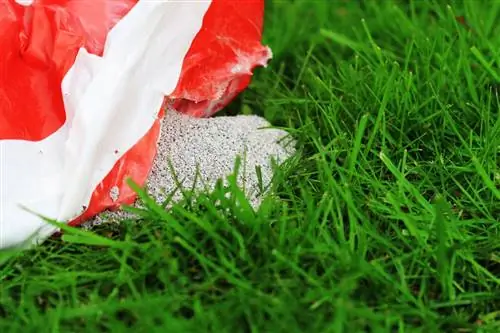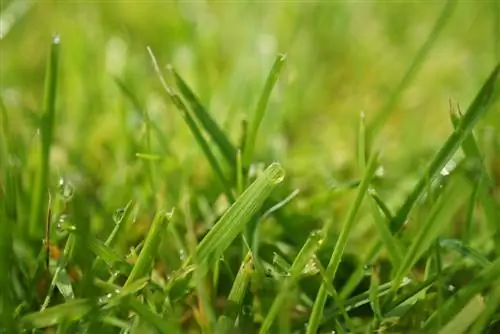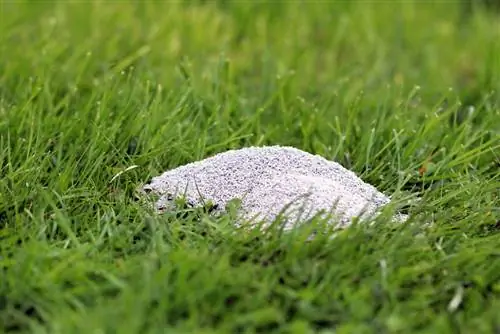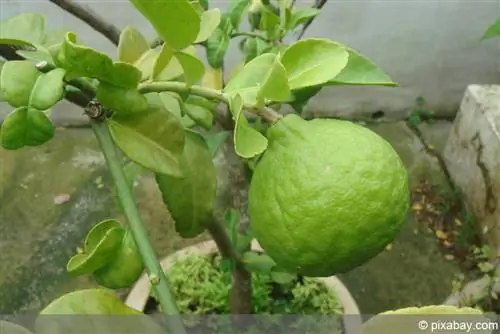- Author admin [email protected].
- Public 2023-12-17 03:39.
- Last modified 2025-01-24 12:45.
There seem to be several good reasons for painting with lime, especially on fruit trees. It prevents damage to the bark caused by strong temperature fluctuations. It protects the tree from very small and large animals. Last but not least, a lime coating for the bark also fulfills the function of a nourishing, smoothing wrinkle cream. The lime mass is relatively easy to make yourself. You can spice it up with a few little miracle cures as you wish.
Frost cracks
A main reason for painting fruit trees with lime in winter is to prevent frost cracks in the bark. Frost cracks are longitudinally cracked grooves and furrows on the tree bark. They usually emerge in late winter, January and February. The heaviest frosts usually occur in these months. At the same time, the sun already has a lot of power. This results in strong temperature differences between day and night. In the trunk and branches, water and nutrients are transported from the roots to the crown. Although these juices withdraw for the winter (juice dormancy), the trunks and branches do not dry out completely. As a precaution, the remaining liquid cell parts are thickened.
However, when exposed to sunlight, they liquefy and are absorbed back into the tissue structures. Strong differences in temperature then lead to an expansion of the remaining liquid in the wood and thus to the bark breaking up. A thick protective coating prevents the bark from cracking. At the same time, the white color ensures that sunlight is reflected. The frozen trunk does not heat up as much when exposed to sunlight.
Trees that are fertilized with a phosphorus-based fertilizer are once again at risk. Due to the heavy fertilization, the wood cannot develop sufficiently for the winter. This means that there is still a lot of water in the trunk just below the bark. Many and large frost cracks can even cause a tree to die. But even small frost cracks can damage the tree because:
- Pests hibernate in the cracks
- bacteria and viruses can easily penetrate the tree through the crack
- Fungal spores nest in the cracks
animal eating
Depending on where the garden with the fruit trees is located, it may also be necessary to protect the trees from game browsing. Deer and others simply love the bark of young fruit trees. On the other hand, the animals are less likely to bite into a thick layer of lime.
Moss formation, lichen formation
Smooth bark also prevents the formation of moss and lichen. The green vegetation offers welcome hiding places for a wide variety of pests, for laying their eggs and for overwintering there in a protected place.
Pests and fungi
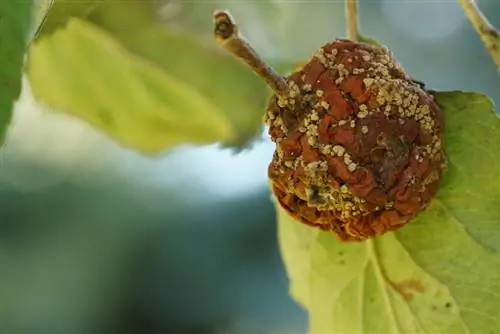
Any pests and fungi that may be present are smothered by the lime coating. Likewise, as already mentioned, the risk of frost cracks is reduced and therefore they no longer serve as loopholes for many pests.
He alth, growth, fertility
The lime coating promotes the growth of thickness and the strength of the immune system of the trees. Because the lime is washed away with the spring rainfall and enters the soil, the tree gradually absorbs valuable nutrients through its roots.
Tip:
If these reasons weren't enough for you: Due to the layer of lime on the bark in winter, the tree sprouts later in spring. This can be important for the survival of the flower in late frosts.
Manufacturing
If, after all these good reasons, you are convinced that you need to give your fruit trees a coat of lime, you can easily make the substance yourself. Of course, they are also available to buy ready-made. The lime mixture then only needs to be mixed with water. But if you mix your lime mixture yourself, you firstly know exactly what is in it and secondly, you can further enhance the substance with small additions.
The basic recipe
The basic recipe with lime is very simple. To do this, quicklime and water are mixed together and a dash of wallpaper paste is added for better adhesion to the bark. An example of the proportions:
- 10 l water
- 1, 5 kg quicklime
- 0.5 kg wallpaper paste (without additives)
Then proceed as follows with these ingredients
Put on protective gloves and safety glasses beforehand. That makes sense because it dusts, splashes, steams, gets warm and corrodes. In this procedure you gradually add the water to the lime. Be very careful when doing this, as splashes can cause damage to the skin and eyes. Be careful not to breathe in fumes and dust! Then let the whole thing soak for several hours. The mixed wallpaper paste is then mixed in before painting.
Small addition:
Blasted lime is quicklime, also called quicklime, calcium oxide or lime in powder form. You can get quicklime from building materials dealers and Raiffeisen dealers. The wallpaper paste should be without additives.
Other ingredients
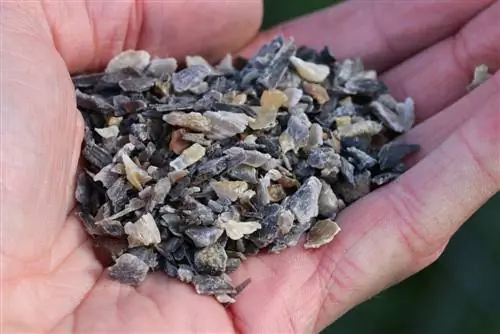
If you mean well, you can enhance your mixture with natural ingredients to provide your trees with special nutrients. With this supply, the tree can defend itself even better against diseases and pests:
- Cow patties
- Horn meal
- Horsetail broth
- tansy broth
Time
From late autumn to mid-winter is the best time to paint the trees. If you paint them early, you may have to paint them again in the winter, especially if it has rained frequently in the meantime. The day itself should be dry and frost-free so that the paint can dry thoroughly.
Tip:
If you have pruned your trees heavily in the fall or only trimmed them late in the year, you should definitely apply a coat of lime to protect them.
Prepare
Before painting, you should do a little preparation, especially for older trees. Use a wire brush to remove loose pieces of bark, lichens and moss from the trunks and thick branches. Young trees usually still have smooth and flawless bark, so the preparatory work can be omitted. There are also special tree scrapers or bark scrapers commercially available for this work. If there is already frost damage on the tree, cut out the wound smoothly with a sharp tool. Before applying lime paint, wounds should always be closed with tree wax.
Implementation
Equipped with a thick tassel, you can get down to business. The trunk and the leading branches are painted. To ensure that the trees are optimally protected, start painting directly on the ground. It goes up into the thicker branches. Young shoots and buds are left out. Depending on how porous or uneven the tree bark is, the painting may need to be repeated a few times. Always wait until the previous coat has completely dried. Only then does the next shift come. The paint is water-soluble, which means that the earlier you start with it, the sooner it may be necessary to apply another layer in January or even February.
Alternatives
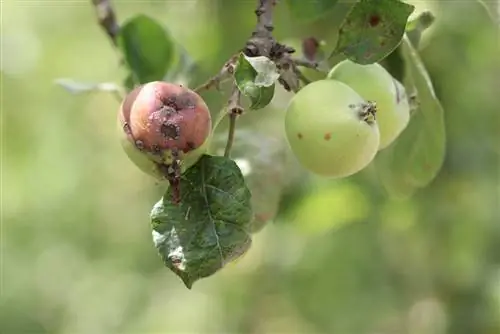
As with almost all topics, there are also a few critical voices that do not recommend lime painting. It would tend to dry out the bark and make it brittle. Everyone should have their own experiences in this area. An alternative to lime painting is clay painting.
Recipe for a clay coat:
- Horsetail broth or fern broth with
- Cow dung
- some stone powder
- Stir the clay or clay powder until the desired consistency is reached
- mix everything together well
- leave overnight
- stir again and apply
Another variant is to add clay (clay powder) to the lime mixture.
Conclusion
No matter whether you use ready-made preparations or make the lime mixture yourself, the result is impressive. Such a lime coating is particularly suitable for valuable fruit trees to keep the trees he althy. This significantly reduces the risk of pest or disease infestation without having to use chemical agents.


